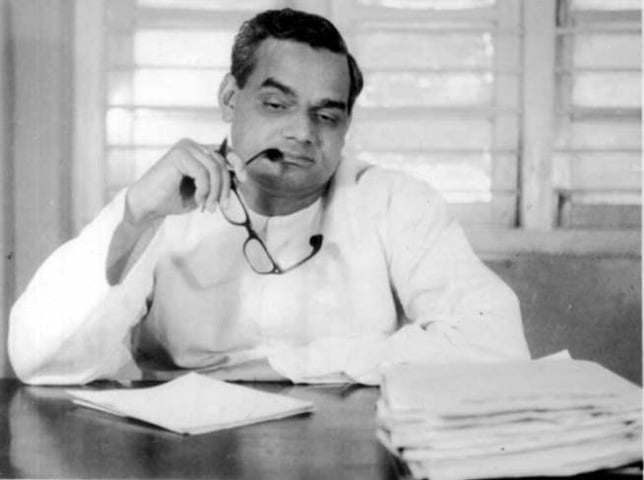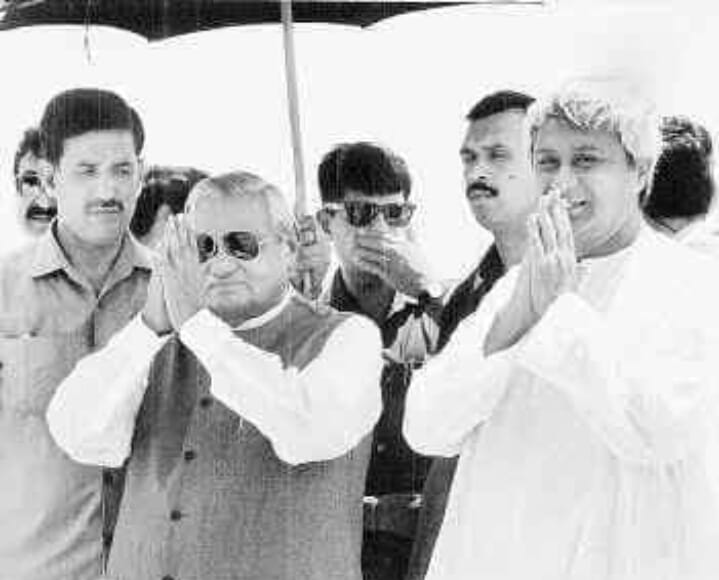Bhubaneswar: Former Prime Minister Atal Bihari Vajpayee, who left for his heavenly abode on August 16, 2018, had an innate passion for Odisha.
After the Super Cyclone on October 29, 1999, which devastated coastal Odisha, the former Prime Minister had rushed to the state to assess the dimension of the calamity and announced Rs 250-crore central assistance for the relief, rescue and rehabilitation of the affected families.
Apart from this, his contribution to the development of Odisha was immense. He had laid the foundation stone of the oil refinery of the Indian Oil Corporation Ltd (IOCL) at Paradip on May 25, 2000. Later, on July 15, 2002, he had laid the foundation stone of the AIIMS at Sijua in Bhubaneswar modelled on that in New Delhi.

Vajpayee was also instrumental in the operationalisation of the East Coast Railway (ECoR) on April 1, 2003.<
The former Prime Minister, while in the Opposition, had proposed special assistance for the KBK (Kalahandi-Balangir-Koraput), one of the most backward and underdevelopment regions in the country, in Parliament.
Being very close to the former Chief Minister Biju Patnaik, Vajpayee had visited Odisha to have a last glimpse of the departed soul after his demise. It is said that Vajpayee had played the role of an advisor during the formation of the Biju Janata Dal (BJD) after the death of Biju Patnaik. Besides, he was also responsible for the induction of the BJD in the National Democratic Alliance (NDA).

During his tenure as Prime Minister, Vajpayee had given the Steel and Mines portfolio to Naveen Patnaik in his cabinet. He was among the top leaders who shaped his political career.
“He was a great leader and it was always a very good experience to have worked under him,” Naveen had said following his demise.
Senior BJD leader and Rajya Sabha member Prasanna Acharya said, “During the formation of the BJD, both Atal ji and Advani ji had given us the mental courage. Whenever Naveen Babu had sought advice, Atal ji was used to give him constructive advice.”
To strengthen the party base of the BJP, Vajpayee had visited Odisha a number of times. In 1981, he had visited Rourkela to review the organizational activity of the party.
After forming the government at the Centre in 1999, Vajpayee, for the first time, had created the Tribal Affairs ministry and entrusted the portfolio to Jual Oram.
“For the tribals, Dalits, backward communities, poor and downtrodden, he was like a God. While giving me the portfolio, he had inspired me to work with diligence and without any fear,” Oram said.

“His ideals were so inspiring that it had given me the strength to discharge my duty with full vigour,” said Debendra Pradhan, another Odisha leader, who was also a Union minister in the Vajpayee’s cabinet.”
Apart from Naveen Patnaik, Jual Oram and Debendra Pradhan, Vajpayee had also inducted Arjun Sethi, Braja Kishore Tripathy and Dilip Ray as Union Ministers in his cabinet.
Senior Congress leader and president of Odisha Pradesh Congress Committee (OPCC) Niranjan Patnaik said he had met Vajpayee when in the Opposition.
“He was a man of very impressive personality. I like his speech. What I have felt that despite being in the BJP, Vajpayee was a secular leader,” he pointed out.


Comments are closed.